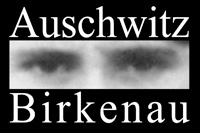




Auschwitz I
The first of numerous concentration camps belonging to the Auschwitz complex, created by the Germans in June 1940 on the outskirts of the city of Oświęcim, annexed to the Third Reich together with this region of Poland. It was created in former Polish Army barracks in the fork of the Soła and Vistula rivers, far from any built‑up areas and near a railroad station at a large junction.
Outside the camp, in an adapted former ammunition bunker, the first crematorium for burning prisoners' corpses was created in August 1940. The furnaces were supplied by the German company Topf und Söhne. The building became also the first of numerous gas chambers in Auschwitz.
The peak camp population was 18,000 prisoners (1944). In the years 1940-1942, Poles, as an ethnic group, predominated among the prisoners in Auschwitz I, with the first Jews from the Reich Main Security Office transports (spring 1942) mostly placed in Birkenau. At the end of the war, these proportions were reversed, e.g. in August 1944 the camp held over 9,000 Jews, almost 4,000 Poles, and almost 3,000 prisoners of other ethnicities.
Auschwitz I expansion plans
Initially, it was made up of the already existing 20 buildings for prisoners as well as two SS administrative blocks. Its expansion began in 1941. Two complexes of buildings for prisoners were planned: 33 in the main camp and 45 in the additional part (camp extension). The roll-call square for 30,000 prisoners was planned between them.
The plans included also the construction of SS residential area near the camp, with single-family and two-family houses with gardens, a school, kindergarten for children with a garden, garages, guest house and hospital. On the opposite side of the camp, military barracks including: residential and staff buildings, casino, garages, gunsmith shops, repair workshops, indoor riding halls, exercise halls and square as well as stables were planned. The plans were only partially realized.
